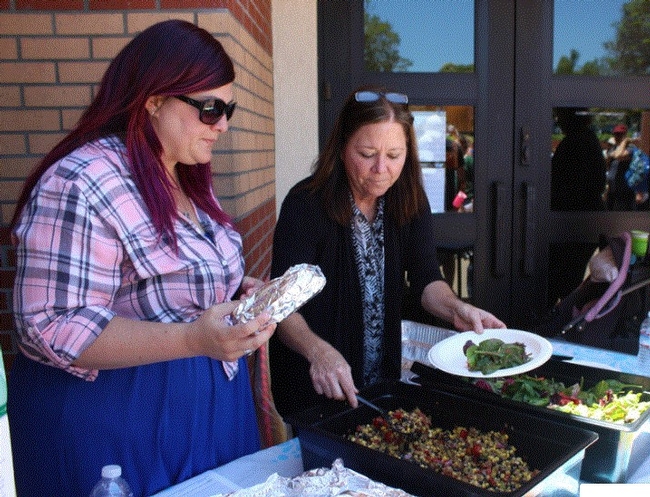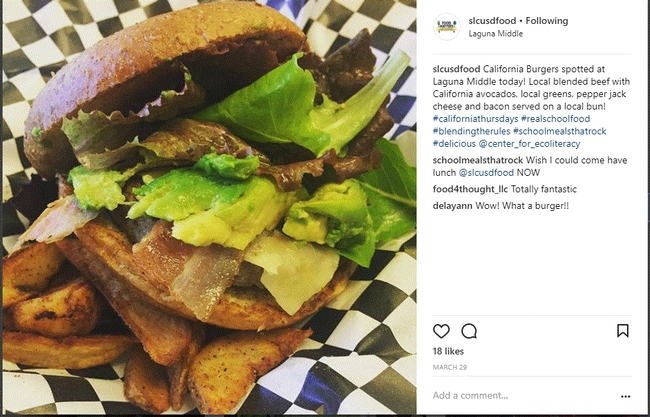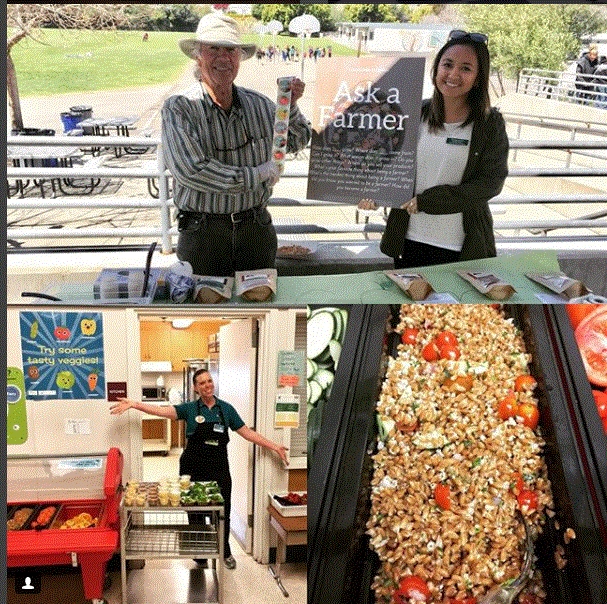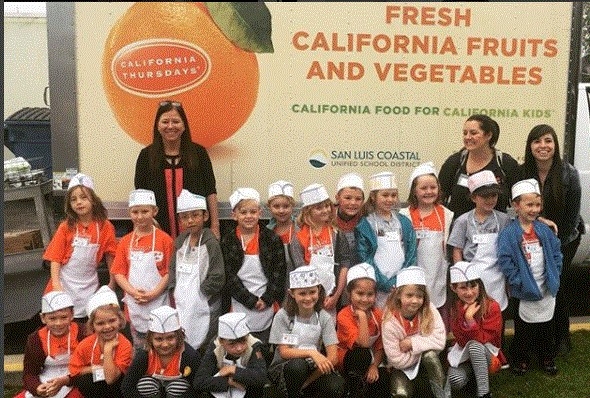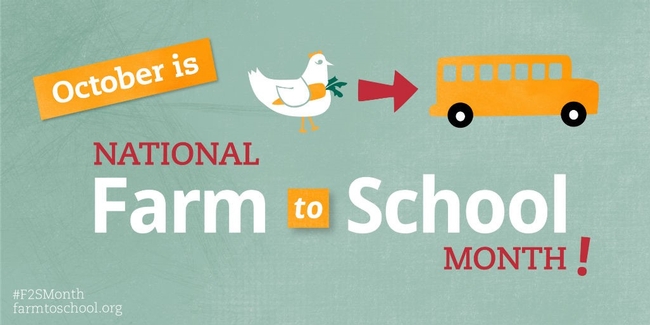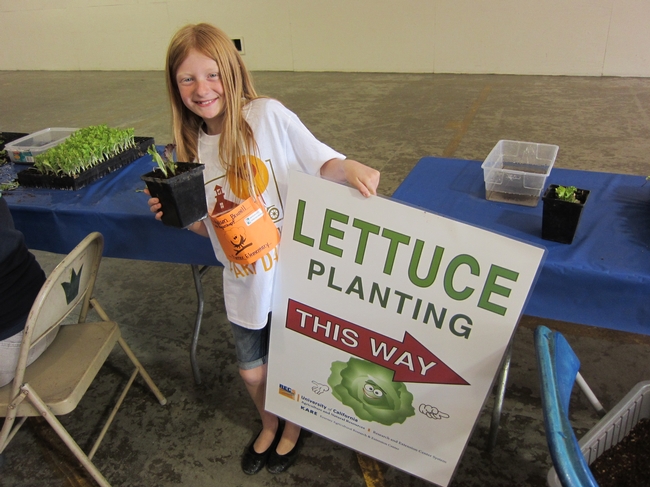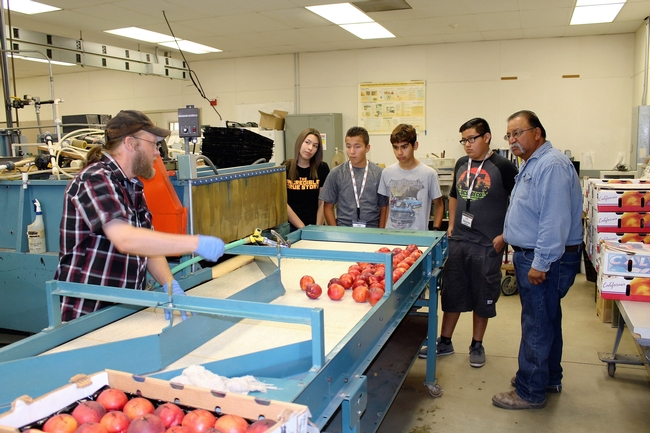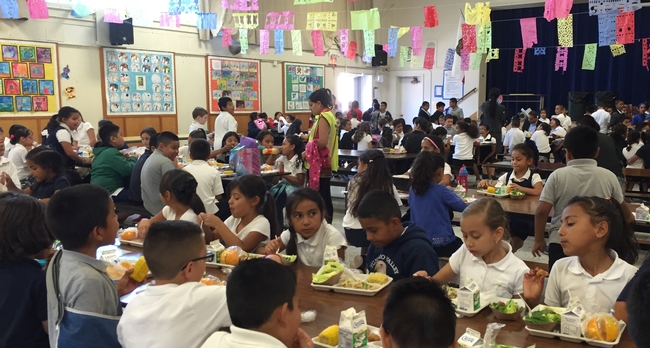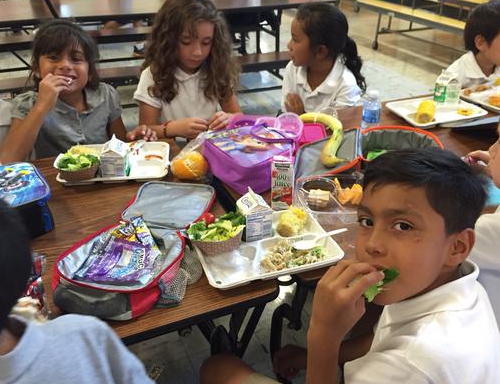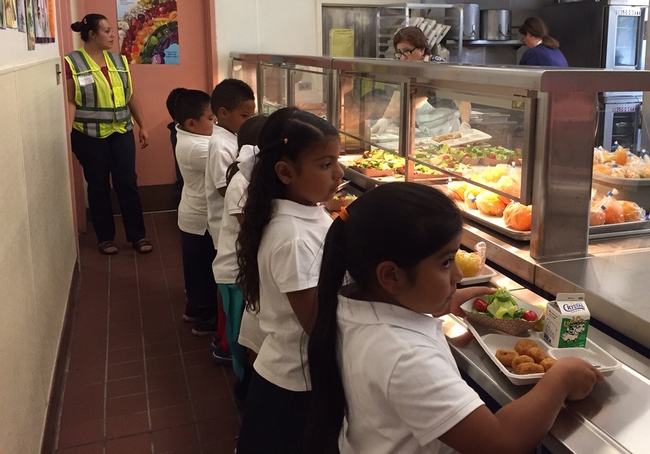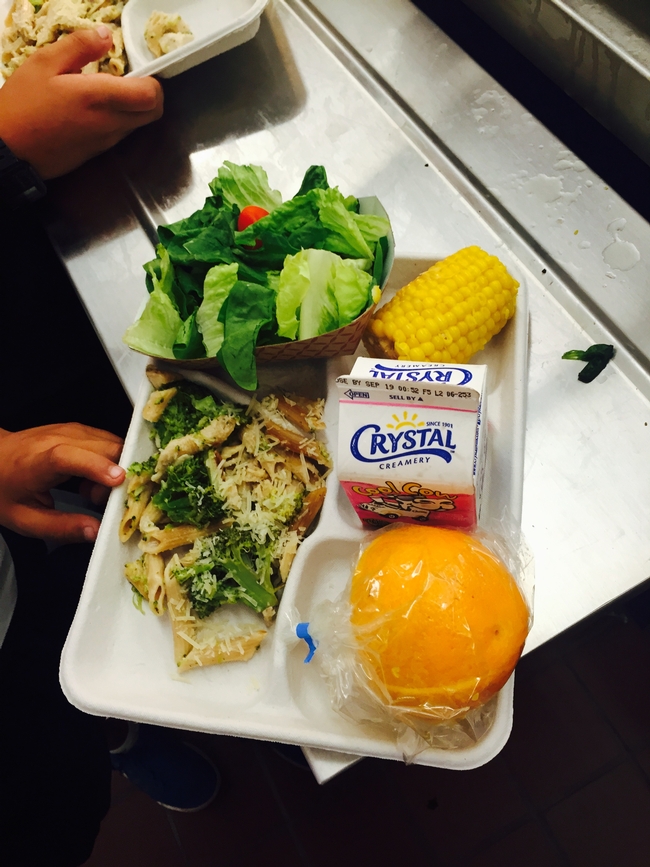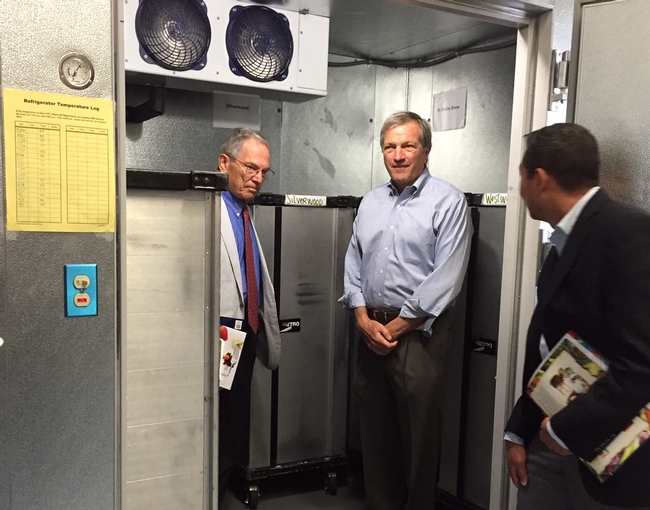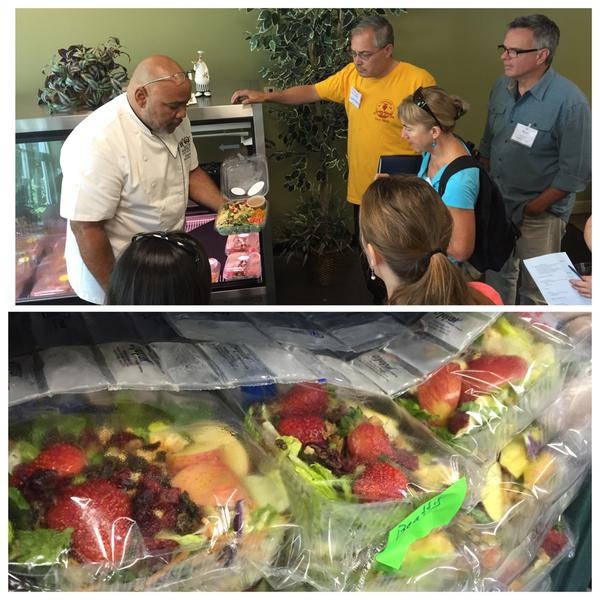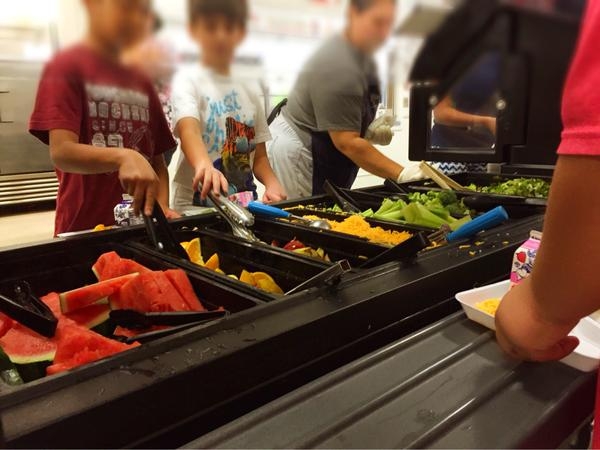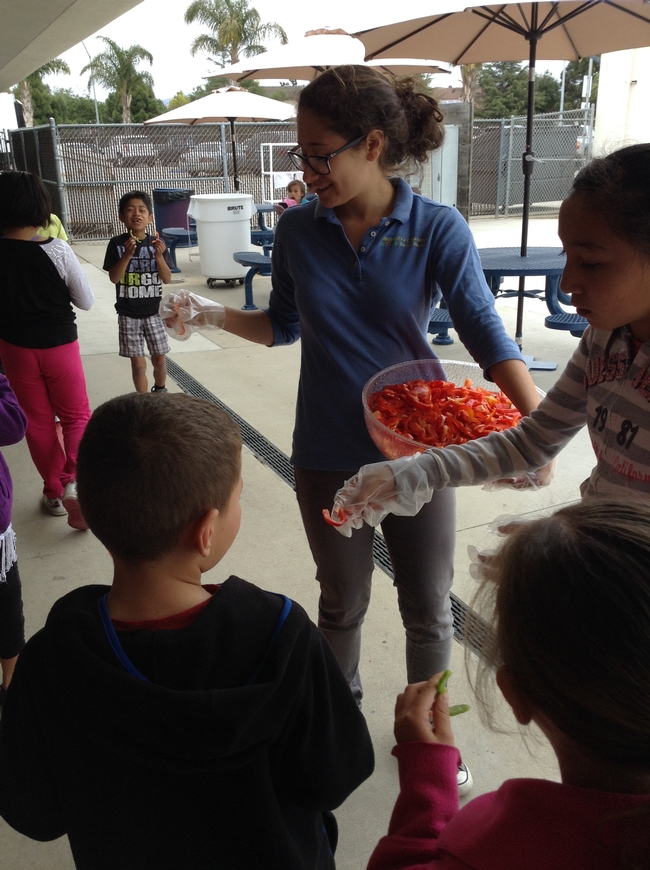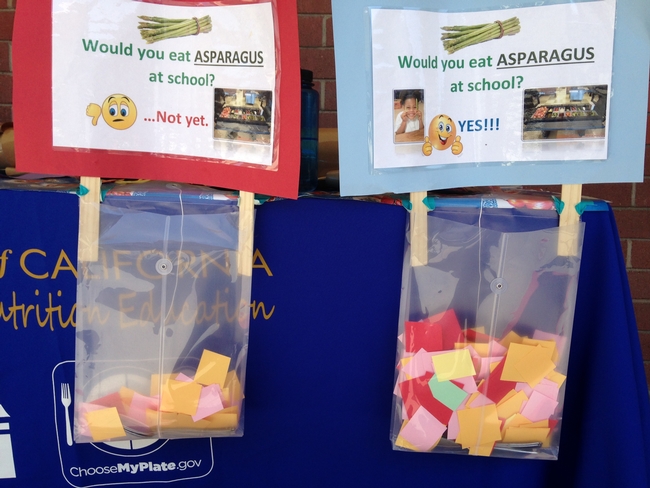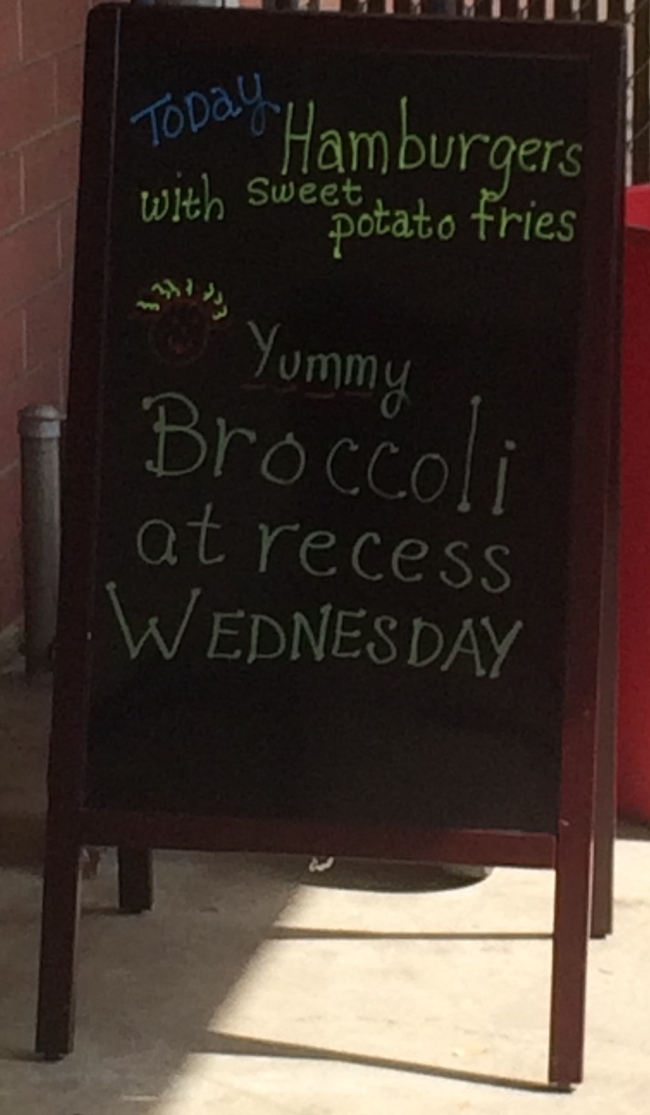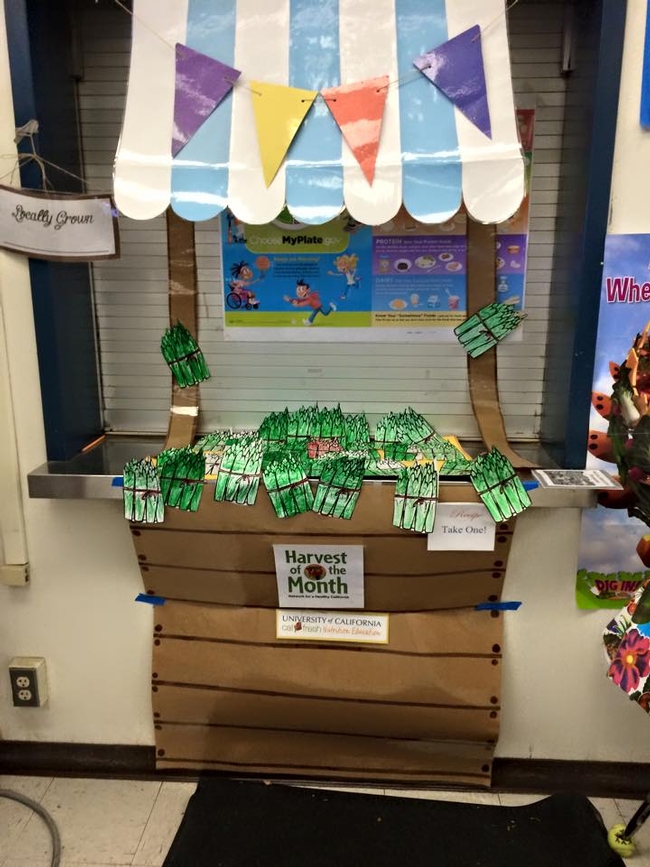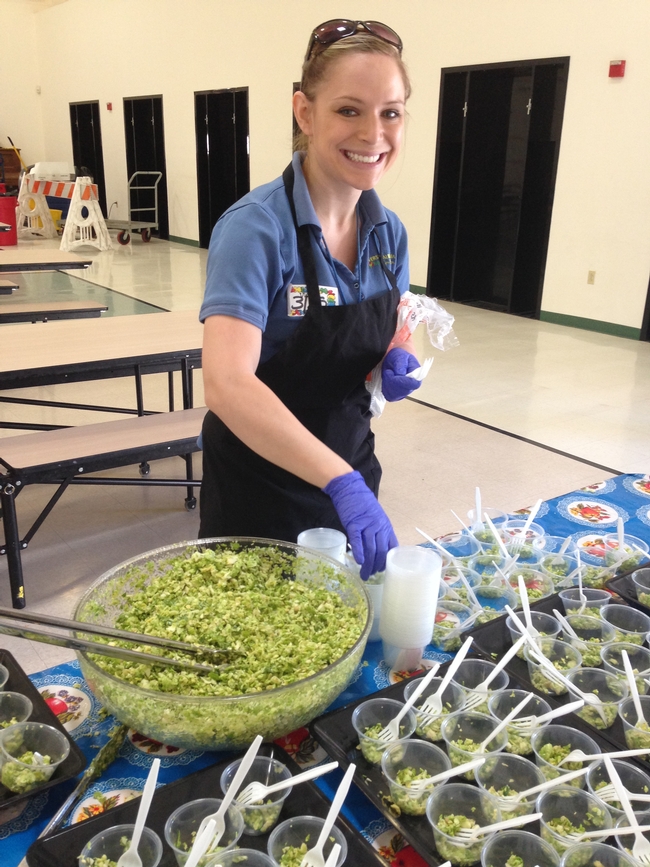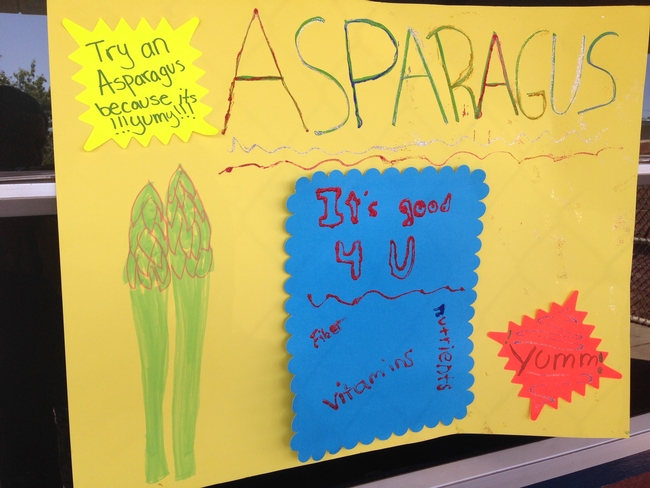Posts Tagged: school food
School food: Supporting healthy kids and local food systems
School food service is a multibillion dollar industry that impacts the lives of over 30 million (mostly) low-income students. Every school day and, with increasing frequency, during summer weekdays as well, this industry provides two-thirds of students' meals (breakfast and lunch), as well as snacks, contributing a large portion of the nutrients youth consume throughout their childhoods. To qualify for a free school lunch, a family of three must make less than $26,208 in 2016-17.
School food service directors have a huge charge on their hands: feed kids, every day, with a lot of requirements, for very little money. The current reimbursement rate for free meals provided to students in California is $3.31, which is required to include at least ½ cup of fruit or vegetables, and the choice to select a whole grain food, a protein food, and low-fat or non-fat milk. Elementary school kids from higher-income homes pay around $3 for the same meals.
So, when a canned mandarin from China is more economical than a local pixie tangerine, how does this impact food service directors' decisions to make sustainable and healthy food selections?
According to the San Luis Coastal Unified food service director, Erin Primer, food service directors have a lot of power to make healthy (or not so healthy) selections. Primer is a school food champion, who some have said is “murdering the lunch lady game.” Primer's first venture into institutional food service was in the private industry and catering. She learned how to get things done, how to be competitive and, ultimately, how to serve a lot of food that people want to eat.
Primer credits this background with enabling her to see things more creatively.
“Because of my background with catering, I was never limited by what school food says we can't do," Primer said. "I never let that burden me. When I came to school food, I loved the freedom to problem solve and connect all the dots with all the requirements, and then just feeding the kids.”
How do you feed kids healthy food while considering the broader impact of food purchasing decisions? Primer says it comes down to participation, it is a game of numbers. How many students and families will choose to eat a school meal on any given day? For Primer, that's about 3,000 lunches and 2,000 breakfasts every day - a number she would like to see grow.
What are some strategies to increase participation so more kids are eating school lunch? To Primer, and many food service directors that are rising to the challenge of feeding our next generation, it's about serving good food. It is easy to get stuck in the weeds of the regulatory environment of school food; and, while following the guidelines is incredibly important, it is also important to think about the food you are serving. Primer says she likes to think about the whole plate and what actually makes sense to serve to kids. You have to keep going back to asking yourself: “Will kids eat it?” and “Does it make sense?”
“We started with asking ourselves, does it taste good? Is it good quality? Is it sending the message we want to send? And if it's not, let's not do it, Primer said.
One of the biggest changes Primer has made to her menus is first, getting rid of the junk. In the world of school food, you can find chocolate doughnuts and cinnamon-sugar cereals that meet USDA regulations for the school meal program. In many cases, food processing companies have reformulated popular food items specifically to meet requirements. By adding in whole grains, or reducing the sugar, fat or sodium content in a product, they can be sold at school even if you could never find that same version of the product in the store. When students see these products at school it can send them mixed messages about what should be included as a regular part of a healthy diet.
The next change she made and continues to make includes increasing the purchase of local foods and removing items that can't be obtained locally. She is able to serve local, grass fed beef on the menu in a “blended burger” which includes mushrooms to make it larger, tastier and economically feasible. She also became one of the first school food service directors to use local grains by featuring emmer farro from a farmer that is less than 15 miles from her office. In addition, she has made some waves by replacing bananas on her menu with other local fruits, like kiwi.
Living on the central coast of California, there is an abundance of local foods available most months of the year. However, “local” does not need to be barrier for food service directors. Defining what is “local” or “regional” is up to each district or institution, who should take into consideration the surrounding agricultural landscape, seasons, and what foods are reliably available.
The last, but really important, step that Primer is working on is telling her story. Working with partners in creative ways, Primer is working hard to sell school food to all families in her district, regardless of their incomes. Her goal is to make meals that all kids want to eat and parents want to buy. She has her delivery trucks wrapped in pictures promoting the local foods they serve each day and she talks to local stakeholders, teachers, parents and school board members at every opportunity.
What are we feeding our kids? Where did it come from? How do our purchasing decisions impact our world?
These are the questions being tackled by school and institutional food service directors every day, whether they are aware of it or not. How they choose to answer those questions will have broad reaching impacts on our communities and future generations.
October is National Farm-to-School Month
Schools across the country are celebrating local connections to local food producers in October during National Farm to School Month. Education and outreach activities such as school gardens, cooking lessons and field trips are teaching students about healthy, local foods and food's journey from the farm to their forks.
There are plenty of opportunities for teachers and schools to celebrate and get involved in National Farm to School Month with the University of California Division of Agriculture and Natural Resources (UC ANR). Here are a few ideas to get you started.
4-H youth development
Launch a 4-H Club at your school. The 4-H Youth Development Program emphasizes enrichment education through inquiry-based learning. Core content areas include Healthy Living as well as Science, Technology, Engineering and Math (STEM). Clubs have access to a wealth of curricula materials exploring food, agriculture and natural resources. 4-H also offers the Ag in the Classroom school enrichment program.
Boots on the ground
Invite UC ANR academics and program staff to your career day or science fair or to make a classroom presentation. Specialists from Master Gardeners, Nutrition Education, Project Learning Tree, California Naturalist and other UC ANR programs know how to engage and inspire your students.
Some programs, including Project Learning Tree, offer "train the trainer" professional development workshops that equip educators with the skills and knowledge to teach concepts in their own classrooms. Project Learning Tree also provides free activity guides to teachers who attend their workshops. The guides highlight differentiated instruction, reading connections, and assessment strategies and offer ideas to integrate technology into classroom instruction,
Research and Extension Centers
Take your students on a field trip to a UC ANR Research and Extension Center (REC). The nine RECs in California are focal points for community participation and for active involvement in current and relevant regional agricultural and natural resource challenges.
Visiting a REC offers students a unique opportunity to learn about food production through the lens of applied science research in plant pathology, integrated pest management, conservation tillage, water conservation, development of new crop varieties, and much more. Some RECs also host extended education programs such as Sustainable You! Summer Camp and FARM SMART.
The 2016 National Farm to School Month theme is One Small Step, which highlights the easy ways anyone can get informed, get involved and take action to advance farm to school in their own communities and across the country.
Each week will have a different focus:
- Education (October 3-7)
- Healthy School Meals (October 10-14)
- Farmers & Producers (October 17-21)
- The Next Generation (October 24-28)
Join the celebrations by signing the One Small Step pledge then take your own small step to support healthy kids, thriving farms and vibrant communities this October by partnering with UC ANR.
This story en español.
Farm to fingers: Schools provide fresh fruits and vegetables for children’s meals
Several grade school students set down their forks to eat their green salad, picking up individual lettuce leaves with their fingers and pushing them into their mouths. Not that I was there to judge for style, it was just an observation as I looked around the cafeteria festooned in colorful hand-cut paper banners to see how many of the kids had taken a salad.
The youngsters are required to take at least a half-cup serving of fresh fruits or vegetables as part of a healthful meal to meet national nutrition standards, but I noticed they were voluntarily eating the fresh leafy greens and orange slices.
The children had selected the food themselves from a new serving line, which was made possible by a grant from the USDA aimed at encouraging children to eat healthier school lunches. U.S. Department of Agriculture has been providing a new round of grants since 2013 to upgrade kitchen and cafeteria equipment. Ygnacio Valley Elementary School is in Mount Diablo Unified School District, which received a USDA grant.
About one-third of children in California are overweight or obese, which is associated with serious health risks.
According to The Pew Charitable Trusts, 93 percent of school districts in California, and 88 percent nationwide, need at least one piece of equipment to better serve students nutritious foods.
Kenneth Hecht, director of policy for the Nutrition Policy Institute organized the Sept. 3 visit to the Mount Diablo Unified School District for Congressman Mark DeSaulnier and USDA executives to see the improvements.
The school district serves about 20,000 meals each day, nearly half of which (46.2 percent) are free or reduced price for children from low-income families. By replacing a refrigerator bought in 1973 with a new walk-in refrigerator, the central kitchen is able to store and serve twice as much fresh produce while saving energy and energy costs, said Anna Fisher, director of Food and Nutrition Services for Mount Diablo Unified.
The new serving line allows for food to be displayed so the children can select their own food, whereas before, each tray was filled by a server and handed to the students.
“We've seen that when the children select their own food, less food gets thrown away,” said Fisher.
“The examples we are seeing at Mount Diablo Unified School District are perfect illustrations of what these USDA grants can do, from the procurement of food to serving healthy meals to children,” said Hecht.
Congressman DeSaulnier, who ate lunch with the students, is sponsoring the School Food Modernization Act (HR 3316) to continue and strengthen the USDA grants program.
Another piece of federal legislation aimed at improving child nutrition is the Healthy, Hunger-Free Kids Act of 2010, which includes farm to school support and expires on Sept. 30, 2015.
“This fall is a pivotal time for the future of Farm to School programs across the country,” said Gail Feenstra, deputy director of the UC Sustainable Agriculture Research and Education Program (SAREP) in the UC Division of Agriculture and Natural Resources.
On Sept. 2, SAREP and the Urban Environmental Policy Institute at Occidental College hosted a tour of farm-to-school sites in the Riverside Unified School District where Los Angeles-area participants were able to meet with farmers, school chefs, food service directors, advocates, researchers and elementary students and to witness firsthand the benefits and challenges of providing farm-fresh fruits and vegetables to Southern California schoolchildren.
Riverside schools have transitioned from heating prepackaged meals to buying local produce and preparing fresh food on-site.
According to Kirsten Roloson, director of Nutrition Services, and Adleit Asi, operations manager, Riverside Unified now buys $400,000 worth of produce from local farmers. One farmer, Bob Knight, who supplies oranges and other produce to Riverside Unified, said he's making five to seven times more money selling to schools than he did before.
“Farm-to-school programs increase access to fresh, healthy produce among school children while also supporting local farms,” said Feenstra. In California, she noted that 2,626 schools participate in farm-to-school programs, serving 1.8 million students and buying more than $51 million in produce from local California farmers.
Feenstra will be leading a similar farm-to-school tour for policymakers in Sacramento on Sept. 29.
"With new equipment and fresh produce, schools can prepare healthy and more appealing school meals that may be the most nutritious meal a child receives that day," Hecht said.
Whether children eat with forks or fingers, the nutritional quality of the food they eat can affect their lives, long term.
The University of California Global Food Initiative aims to put the world on a path to sustainably and nutritiously feed itself. By building on existing efforts and creating new collaborations among UC's 10 campuses, affiliated national laboratories and the Division of Agriculture and Natural Resources, the initiative will develop and export solutions for food security, health and sustainability throughout California, the United States and the world.
Encouraging students to eat their vegetables
Which end of an asparagus do you eat? I am not going to eat that, it's too spicy! Pink milk cartons (non-fat) are only for girls.
These and many other questions and comments came from students and staff at schools in the Santa Maria-Bonita School District (SMBSD) during recent efforts to expose students to a wider variety of fruits and vegetables. A collaboration between SMBSD staff and UC Agriculture and Natural Resources's UC CalFresh Nutrition Education Program of San Luis Obispo and Santa Barbara Counties (UC CalFresh) was initiated in the 2014/2015 school year to work on increasing the likelihood that students will select and consume vegetables offered through the school meal program.
The collaboration included three components: monthly, school-wide seasonal produce tastings facilitated by UC CalFresh and supported by the school district; Smarter Lunchroom Movement strategies implemented by district food service staff with support from UC CalFresh; and classroom nutrition education with curricula provided by UC CalFresh and implemented by participating classroom teachers.
The monthly produce tastings were a coordinated effort between the UC CalFresh Nutrition Educators, student leaders from the Student Nutrition Advisory Council, and Cafeteria staff. The first goal was to familiarize the students in the five elementary schools with local, seasonal vegetables – and eventually get them on the school menu and on students' plates. During the months of March, April and May of 2015 more than 4,000 students at five participating schools
got the opportunity to try new vegetables like Brussels sprouts, asparagus and sweet bell pepper. After tasting new vegetables, students then placed a ticket in either a “yes” or “no” box to indicate whether they would like to see those vegetables again on their school menu.Student leaders participated in all aspects of the monthly tastings, from advising on what produce items to sample, to making signs advertising the featured produce, to handing out the samples to their peers. The voting results were overwhelmingly positive with a majority of students in favor of putting Brussels sprouts, asparagus and yellow bell peppers on the school menu. As a result of these findings, and the students' enthusiasm for trying new things, food service staff are working on incorporating a Brussels sprouts salad into their regular menu.
The second component included Smarter Lunchroom Movement (SLM) strategies from the Cornell Center for Behavioral Economics. These strategies were introduced at a cafeteria manager training facilitated by UC CalFresh. At the training, district staff were introduced to SLM concepts and encouraged to identify two changes they wanted to implement in their
school cafeterias before the end of the year. Changes identified included improving signage on the salad bar and in the entryway, creating a cafeteria brand (i.e. Bulldog Café) to encourage students to take pride in their lunchroom, and creating a more welcoming atmosphere so students could sit and enjoy their school meal. In addition, UC CalFresh staff made a regular habit of eating lunch in the school cafeteria with students when they were on campus for other nutrition education events.Students, at first surprised seeing adults eating school meals, welcomed the nutrition educators to their tables. Staff took the opportunity to talk to the students about their food, model healthy food habits and dispel myths about their food. Myths included things like pink milk cartons (non-fat) were only for girls and school lunches are unhealthy. By the end of the school year, all participating schools had improved their scores on the Smarter Lunchroom Self-Assessment Scorecard and plans are currently being developed to provide districtwide cafeteria branding.
The third component was the in-class curricula. Classroom curricula has been the primary focus of the UC CalFresh program for many years. UC CalFresh provides “No-Prep Nutrition Education Kits” and in class food demonstrations to enrolled teachers (Educator Extenders). These Educator Extenders teach evidence-based nutrition education lessons based on the 2010 Dietary Guidelines for Americans. This year, as the collaboration with the school cafeteria developed, UC CalFresh staff rolled out the concept of Harvest of the Month mini kits and farm stands to coincide with the produce item being featured in the monthly cafeteria tastings. Educator Extenders had the
option of connecting classroom curricula with cafeteria efforts through the Harvest of the Month mini-lesson, then posting their students' work on the farm stand bulletin boards in their school cafeteria. The lessons and the student artwork helped to bring the three components together for students in all age groups.This collaborative effort has brought about many opportunities to educate, expose and inform students and staff about local produce and how delicious it can be in their school lunches. Students who once thought that sweet yellow, green and red bell peppers were too spicy had the opportunity to sample them and see for themselves. Students who did not know which end to eat an asparagus from got to sample it and then vote on whether or not they wanted to try it again. Food service staff also got to see how excited their students were to sample new items, including Brussels sprouts, and have a voice in their school menu.
For more pictures, visit the UC CalFresh Facebook page.
An initiative to maintain and enhance healthy families and communities is part of the UC Division of Agriculture and Natural Resources Strategic Vision 2025.


